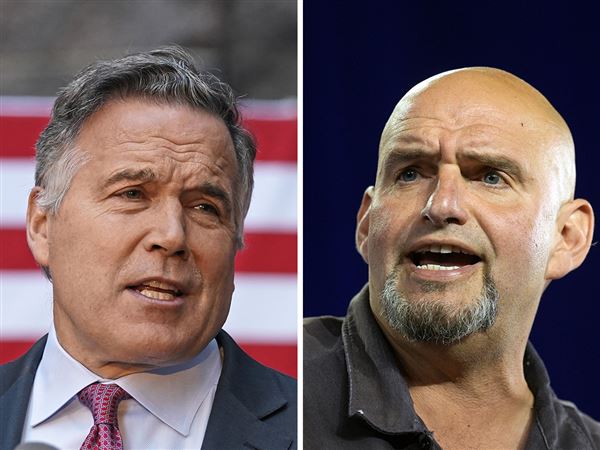The U.S. Environmental Protection Agency said the region's proposed $2 billion wet weather sewer system improvement plan is deficient and doesn't comply with water quality goals set in a 2008 federal consent order.
But some local officials and community leaders see the EPA ruling, announced late Friday afternoon, as a golden opportunity to add green infrastructure components such as grass roofs, rain gardens, tree planting, rain barrels and bioswales.
The EPA didn't formally disapprove of the plan in the decision, but said it will meet with the Allegheny County Sanitary Authority about the proposal's deficiencies.
According a one-page letter to Alcosan from Jon Capacasa, EPA's water protection division director, the plan, which was years in development, "does not demonstrate that full implementation will result in compliance with all of the requirements of the Consent Decree" by the 2026 deadline.
The letter ended by stating the Department of Justice will contact Alcosan soon with a proposal about how the problems with the plan will be resolved.
Arletta Williams, Alcosan executive director, said she is reviewing the letter and looking forward to further discussions with the Department of Justice and EPA.
"We will take a look at this with the attorneys next week, but right now we're in a holding pattern," Ms. Williams said. "They've given us something to look at and now I am anxiously anticipating our meeting with Justice."
Alcosan submitted a wet weather control plan to EPA a year ago that proposed to capture and treat 79 percent of the region's combined sewer overflows, using only so-called "gray infrastructure" fixes, including construction of bigger collector pipes and three massive underground stormwater storage tunnels that would hold wet-weather flows until they can be pumped through a much-expanded Alcosan treatment facility.
A more extensive $3.6 billion plan proposal would have captured more than 90 percent of that overflow, but was judged too costly for Alcosan's ratepayers, which include the city of Pittsburgh and 83 other municipalities.
According to a written statement issued by David Sternberg, an EPA spokesman, the state Department of Environmental Protection and the Allegheny County Health Department also participated in the plan review and agreed with the noncompliance determination.
Discussions involving the federal, state and local agencies have focused on a "phased approach" to implement the terms of the 2008 federal court-approved consent decree, the statement said.
The statement also said, "EPA does not expect this to delay Alcosan from implementing measures that will ultimately lead to achieving the required water quality goals in its service area."
Alcosan and the municipalities must pursue a "sustainable approach" to achieving water quality improvement goals, the statement said, "including regionalization and a municipal flow reduction program, including green infrastructure where appropriate."
Ms. Williams said Pittsburgh Mayor Bill Peduto, county Executive Rich Fitzgerald and the Alcosan board all support using green infrastructure in the plan.
"We're moving in that direction, and have been moving in that direction," she said.
Earlier this week, Ms. Williams, Mr. Peduto and Mr. Fitzgerald were in Washington, D.C., to discuss the proposed plan with the county's congressional delegation in the office of U.S. Rep. Mike Doyle, D-Forest Hills.
Mr. Peduto said there was agreement that the plan needed more green infrastructure and that the EPA should be lobbied to give Alcosan an extension to improve on its current plan. There were also concerns raised about the affordability of the plan.
Mr. Peduto said he has plans to meet with EPA officials.
"The plan that we submitted is not the plan that we are pursuing," he said. "The plan that we are pursuing is a new plan."
The EPA decision not to approve the plan presents "a big opportunity to look at large scale inclusion of green infrastructure," said Barney Oursler, executive director of Pittsburgh United, a coalition of 13 environmental, union, community and faith organizations that has pushed for green infrastructure in the Alcosan plan.
"I think we have a wide open door now to rethink the whole plan," Mr. Oursler said. "EPA is saying we really need to go back to the drawing board."
He said the Pittsburgh Water and Sewer Authority also has a chance to lead an "integrated approach" to stormwater reduction and treatment that will meet future stormwater quality standards.
Mr. Fitzgerald said the EPA's letter gives Alcosan and its stakeholders an opportunity to pursue green infrastructure, and he's "hopefully optimistic" that that and source reduction get folded into a revised plan.
First Published: January 31, 2014, 10:39 p.m.
Updated: February 1, 2014, 4:32 a.m.

















